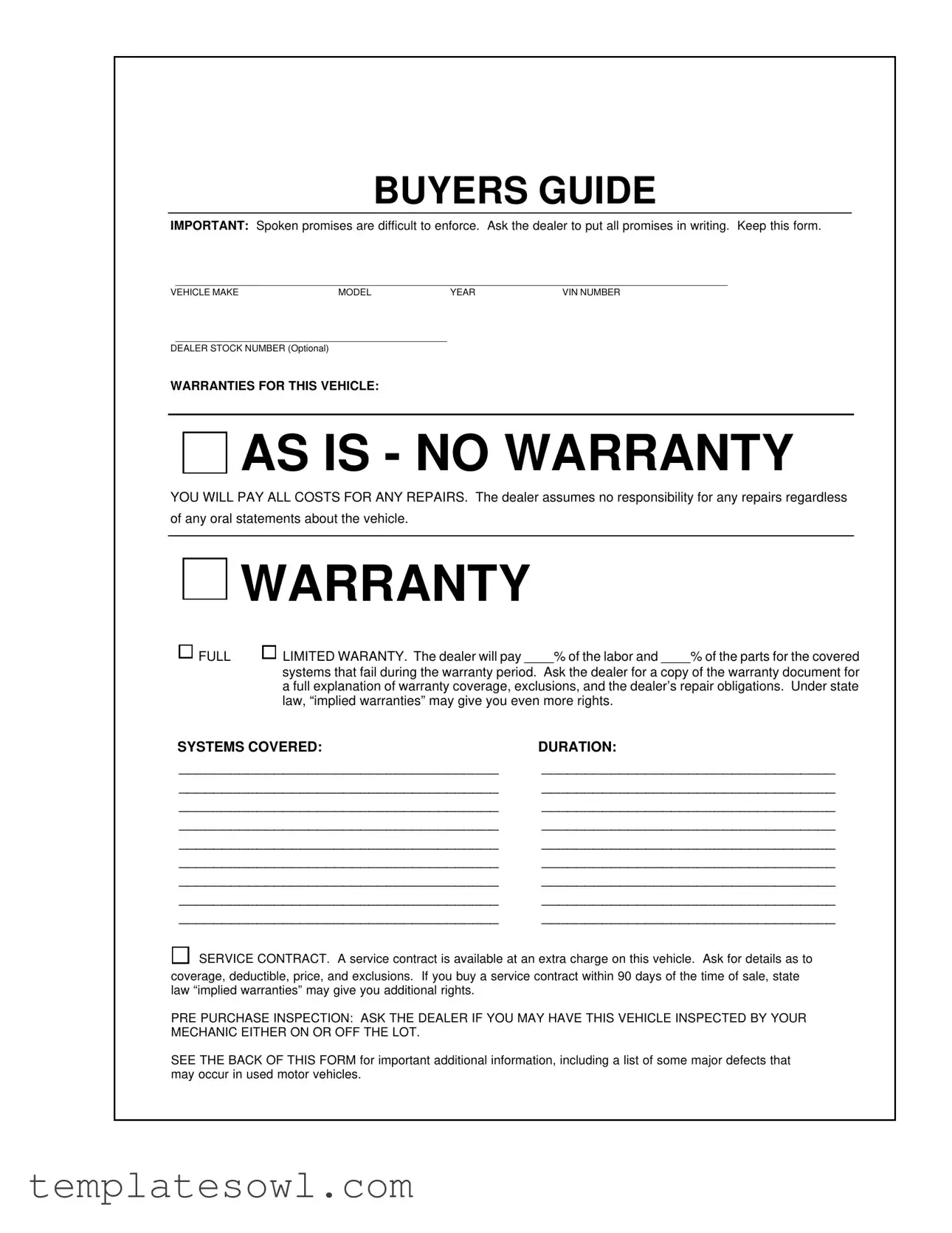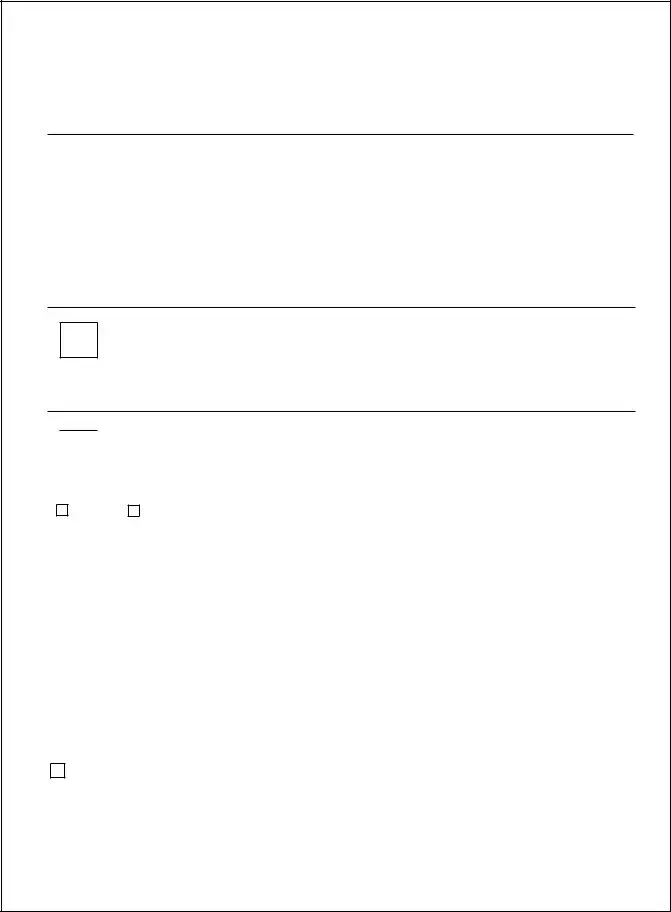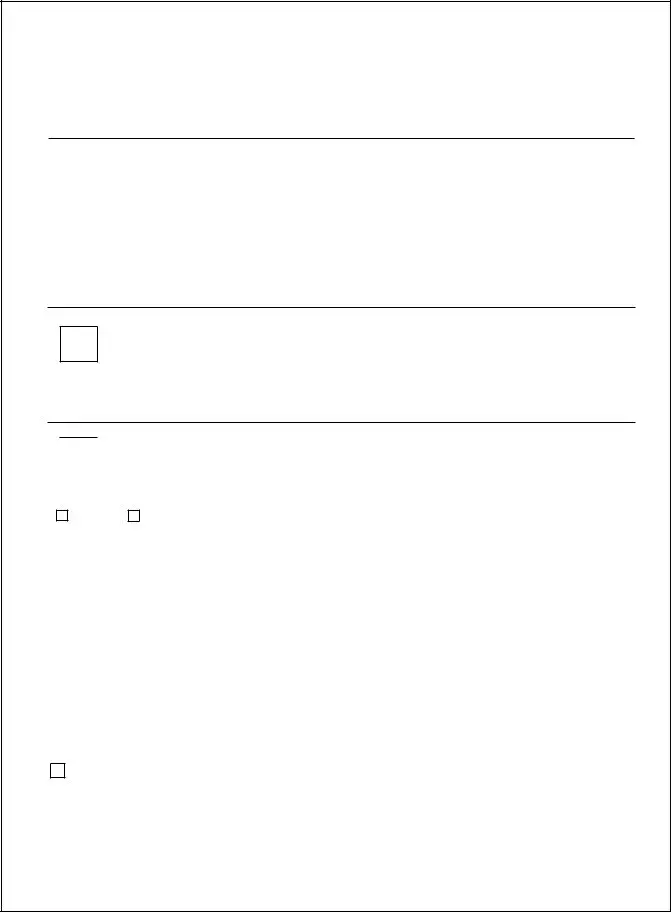What is the purpose of the Buyers Guide form?
The Buyers Guide form is designed to provide essential information about the vehicle you are considering purchasing. It outlines the warranties available, details any stated dealership policies, and highlights your rights as a buyer under state law. Keeping this form with you can prove invaluable in case of future disputes regarding the condition of the vehicle.
What types of warranties are available on the vehicle?
The form typically presents a few options for warranties: “As Is - No Warranty,” “Full Limited Warranty,” and “Implied Warranties Only.” Each of these options offers different levels of protection, so it is crucial to understand what is covered and what isn’t when making your purchase. For example, with the “As Is” option, the dealer is not responsible for any repairs post-sale, while a Full Limited Warranty may cover a percentage of labor and parts for certain systems.
What does the “As Is - No Warranty” option mean?
Choosing the “As Is - No Warranty” option means you accept the vehicle in its current condition without any guarantees regarding its performance or repair responsibilities from the dealer. All repair costs will be your responsibility. This option can carry significant risk, so it’s wise to carefully assess the vehicle or have it inspected before proceeding.
How are Implied Warranties related to my purchase?
Implied Warranties are protections provided under state laws that may give you certain rights for repairs or replacements of parts that had serious problems not apparent at the time of sale. While the dealer may customize what they cover, these implied warranties can safeguard your interests even when no formal warranty agreement is in place.
What is a Service Contract and how does it work?
A Service Contract is an additional agreement that you can purchase for extra coverage. This contract typically outlines details like coverage, deductibles, costs, and any exclusions. If you buy a Service Contract within 90 days of purchasing the vehicle, you may also gain additional rights under state law concerning implied warranties.
Can I have the vehicle inspected by my mechanic?
Yes, the Buyers Guide encourages you to ask the dealer if you may have the vehicle inspected before finalizing the purchase. Having an independent mechanic conduct a thorough inspection can help identify potential issues that may not be visible during a standard test drive. This step is vital in ensuring you make an informed decision.
What major defects should I be aware of?
The Buyers Guide provides a list of significant defects that may occur in used motor vehicles, including issues with the frame, engine, transmission, electrical systems, braking systems, and tires. Familiarizing yourself with these common problems can help you ask better questions and spot potential issues during your inspection.
What should I do if I encounter a problem after purchase?
If you encounter a problem after purchasing the vehicle, refer back to the Buyers Guide and any agreements you signed with the dealer. If the vehicle was sold with any form of warranty or implied warranties, contact the dealer promptly to address your concerns. Keep records of all communications regarding the issue.
Why is it important to keep this form?
Keeping the Buyers Guide form is vital because it serves as evidence of your purchase agreement and outlines the warranties provided. In case of disputes, this document can help clarify your rights and the dealer's obligations, making it an essential part of your transaction.



 WARRANTY
WARRANTY

 WARRANTY
WARRANTY